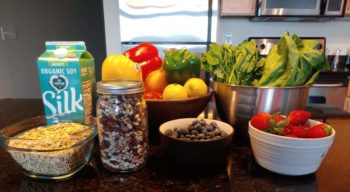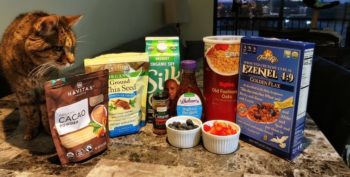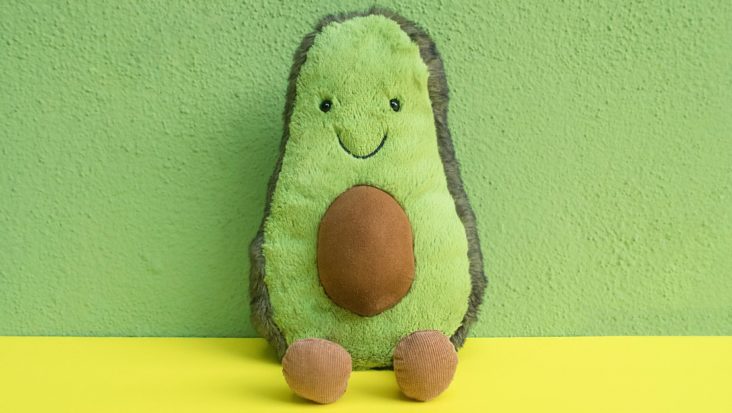posted November 16, 2021
The Standard American Diet (SAD) wrecks our digestive system. Digestive disorders are becoming increasingly common. Sixty to seventy million people are affected by diagnosable digestive problems in the United States alone. These include:
- Irritable Bowel Syndrome (IBS)
- Crohn’s disease
- Leaky gut
- Gastroesophageal reflux disease (GERD)
- Chronic constipation
- Diverticular disease
- Gall stones
- Acid reflux
- Liver disease
- Other types of non-specific gut-based inflammation
- Other digestive health conditions.[1]

As the SAD diet expands around the globe, digestive cancers are also on the rise. Colon, stomach, and liver cancer combine to contribute to over 2.4 million annual cancer deaths worldwide.[2] Colorectal cancer diagnoses have been increasing in younger populations in the United States since the mid 1990’s.[3]
Digestive health is directly connected to lifestyle choices, primarily regarding food. And the key dietary habit for good gut health is eating plenty of fiber. While we Americans obsess over our intake of protein, it is the fiber in which we are deficient. Only 3% of Americans are deficient in protein, but only about 3% of Americans get enough dietary fiber.[4][5] Because of our love affair with meat, dairy, and eggs, which have no dietary fiber, the silence on this topic is deafening. The underappreciation of fiber not only harms our digestive health, but insufficient fiber also contributes to cardiovascular disease, type-2 diabetes, and obesity. [6][7]
So, What is Fiber?

Fiber is the part of plant foods that our bodies can’t digest or absorb. It is found in fruits, vegetables, whole grains, nuts, seeds, and legumes.
There are 2 types of dietary fiber: insoluble and soluble. Soluble fiber absorbs in water and other bodily fluids, forming a gel which helps control blood sugar and reduce cholesterol. By contrast, insoluble fiber absorbs water and fluids. It adds bulk and acts like a brush to clean out the colon. It helps food pass through the digestive tract more quickly and prevents constipation.
How Much Fiber Do You Need?
The USDA recommends that women and men get 25 grams and 38 grams of fiber, respectively, in their daily diets; whereas, women and men over the age of 50 should get 21 grams and 30 grams daily, respectively.[8] It is generally not necessary to separately track your consumption of soluble and insoluble fiber. If you are eating a diet rich in whole plant foods, you should be just fine.
But What About Carbs?
High consumption of complex carbohydrates, in the form of whole plant foods, does not promote type-2 diabetes or weight gain. Fiber digests slowly in your body, which promotes a slow release of sugar, sustained energy levels, and prolonged satiety. The American Diabetes Association recommends a diet low in saturated fat, moderate in salt and sugar, with meals based on lean protein, non-starchy vegetables, whole grains, healthy fats, and fruit.[9]
12 Ways to Increase Your Daily Fiber

-
- Eat fruits and vegetables.
- At least 5 servings every day.
- Try more recipes with beans and grains.
- Such as peas, barley, lentils, quinoa, bulgur, or brown rice.
- Choose whole grain breads, cereals, tortillas, and crackers.
- They should list a whole grain as the first ingredient on the label.
- Add seeds to your morning oats, cereal, or smoothies.
- Such as flax, chia, or hemp.
- Replace dairy with fresh avocado.
- Great substitute for cheese and sour cream in your favorite Mexican dishes and salads.
- Replace traditional salty snacks with raw vegetables or unsalted or low-sodium nuts.
- Eat raw vegetables, such as carrots, broccoli, and cauliflower, dipped in hummus instead of dairy-based dips.
- Replace highly-processed packaged sweet snacks with fresh fruit or whole-grain snacks.
- Adding a few sprinkles of cinnamon, a teaspoon of cacao powder, and a tablespoon of agave nectar to sliced apples, bananas, or berries can satisfy any sweet tooth.
- Add fiber to your diet slowly, over 2 to 3 weeks.
- If you add it too fast, you may feel bloated or have gas pains. Drink 6 to 8 cups of water a day to aid digestion.
- Buy unprocessed foods when you can.
- Food processing often removes fiber.
- Look for the “dietary fiber” content on food labels.
- Good sources of fiber have at least 10% of the “percent daily value” for fiber.
- To find whole-grain foods, look for the words “whole wheat” or “whole grain” in the ingredient list.
- “Multigrain” is not the same as whole grain.
- If you are eating gluten-free foods, be sure to check the label for fiber content.
- Eat fruits and vegetables.
References
[1] https://www.niddk.nih.gov/health-information/health-statistics/digestive-diseases
[2] https://www.who.int/news-room/fact-sheets/detail/cancer
[3] https://www.cancer.org/latest-news/facts-and-figures-2019.html
[4] https://www.ars.usda.gov/ARSUserFiles/80400530/pdf/0102/usualintaketables2001-02.pdf
[5] https://www.ncbi.nlm.nih.gov/pmc/articles/PMC6124841/
[6] https://care.diabetesjournals.org/content/29/8/1777
[7] https://www.heart.org/en/healthy-living/healthy-eating/eat-smart/nutrition-basics/whole-grains-refined-grains-and-dietary-fiber
[8] https://www.health.harvard.edu/blog/should-i-be-eating-more-fiber-2019022115927
[9] http://main.diabetes.org/ws/ADM/MRC_ADM_2018_Myths.pdf

Vince Tucker is a Main Street Vegan Academy Master Vegan Lifestyle Coach and Educator whose training and education includes the American College of Lifestyle Medicine for Coaches, The Mayo Clinic Health and Wellness Coach Training Program, Moving Medicine Forward, and the T. Colin Campbell Center for Nutrition Studies, as well as a Bachelor of Science Degree in Broadcasting and a Minor in Speech Communication from Northwest Missouri State University. Vince’s experience includes providing on-call writing, editing, and plant-based educational support for businesses, public schools, and non-profit organizations and advocacy groups.
Vince also provides individualized coaching in supporting his clients to embrace six pillars of health. He is currently accepting modest donations to his beloved Shy 38, Inc. animal sanctuary in lieu of direct payment. To find out if you are a good fit for his program, please message him on LikedIn or email him at [email protected].


Excellent article, Vince, and thank you for highlighting this American health crisis. It really does require more attention (and federal action). Speaking of, Agriculture Fairness Alliance just sent a letter to Secretary Vilsack urging federal farm policy to prioritize fiber-rich foods that are also accessible to all. Thought you’d be interested in checking it out: https://www.agriculturefairnessalliance.org/news/letter-to-secretary-vilsack/
Thank you for your kind words, Alissa. I am aware of AFA’s letter. It was brilliantly written!